Hindu Pilgrims from all over India have reached Kashmir for the Hindu Holy Pilgrimage called Amarnath with tens of thousands of armed forces deployed across all routes as a militant group TRF (The Resistance Front) issued a threat letter in May amid intensified encounters and rising targeted killings in the valley.
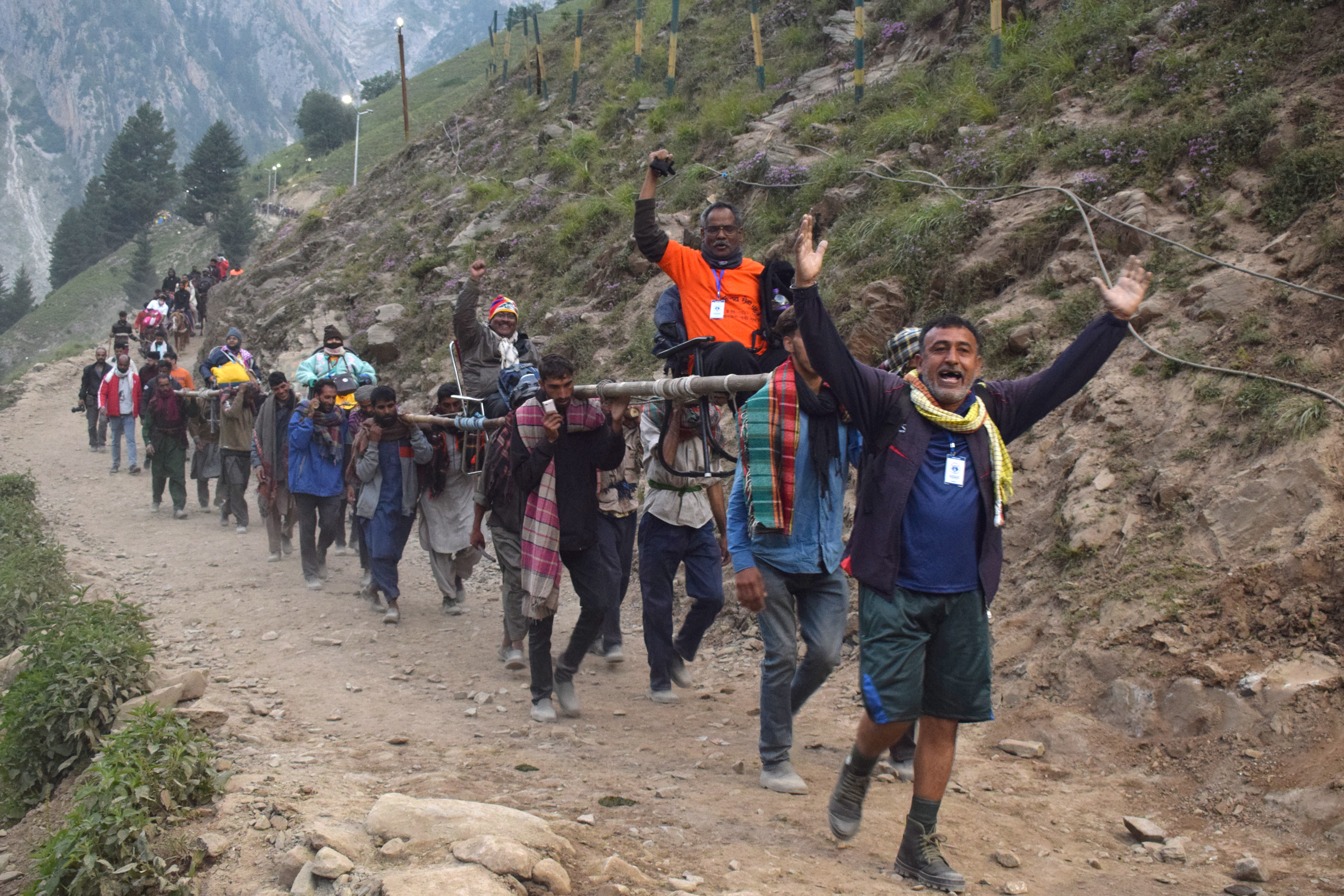
But for 29-years-old Ria Chandani who belongs to India’s Madhya Pradesh, lush green mountains with rivers gushing parallel to road looks like a dream.
Since my childhood, I have watched serials on TV and heard stories from grandparents and parents about Kashmir’s Amarnath Yarta, Ria told The Himalayan Post.
“I and my family are very fortunate to be here, no fear struck in such a beautiful environment. Kashmir’s scenery adds majesty to our religious fervor” she said.
Our faith is our strength. We have heard life gets better and chaos leaves when one visits the place, she added.
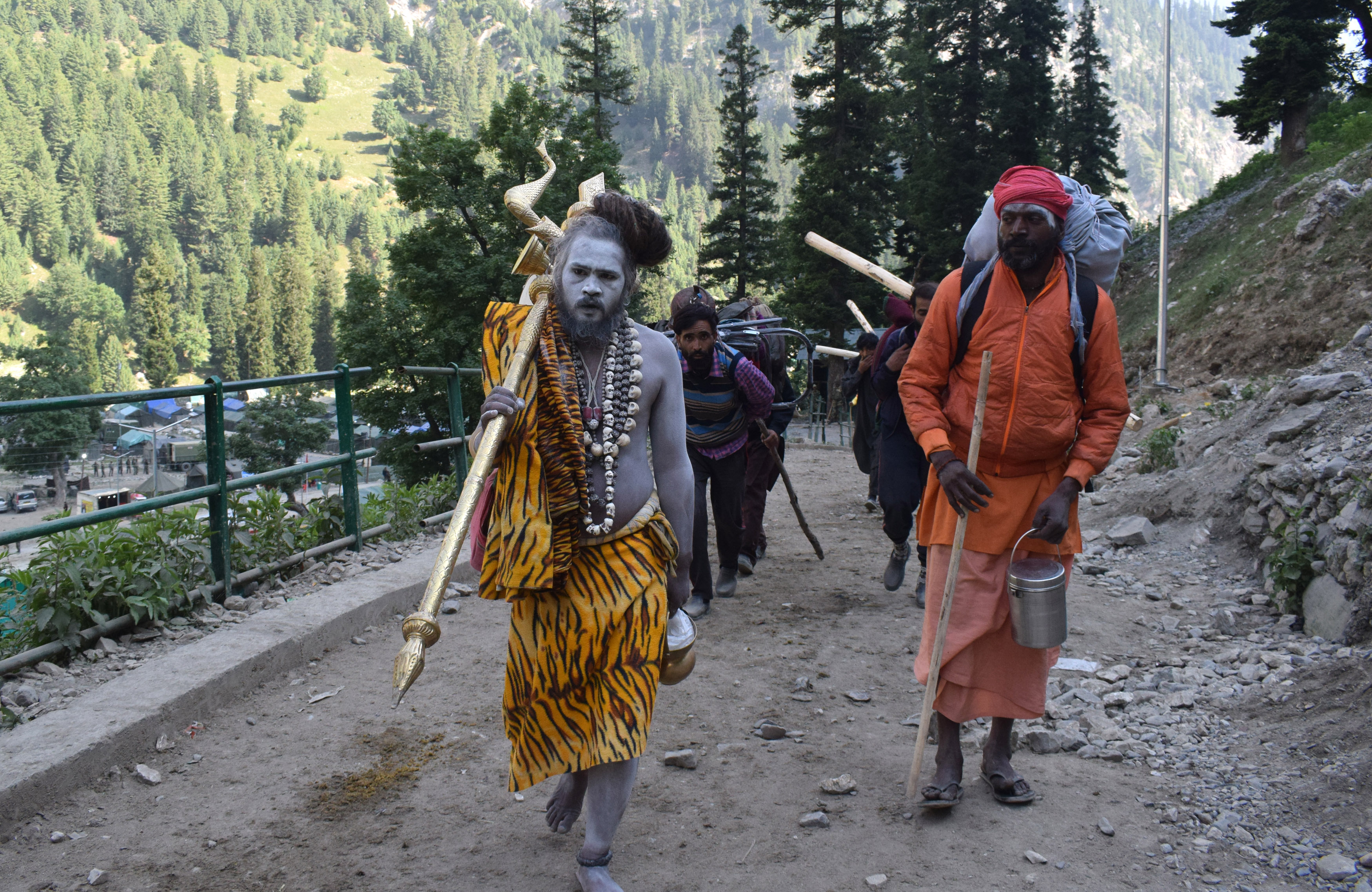
Multi-tier security has been implemented and pilgrims have been provided RFID (Radio Frequency Identification) a wireless tracking system for tracking locations on a real-time basis.
“The security forces are checking documents of all pilgrims at several checkpoints, they have also given us an additional I-card which they say will track our locations,” Ria said.
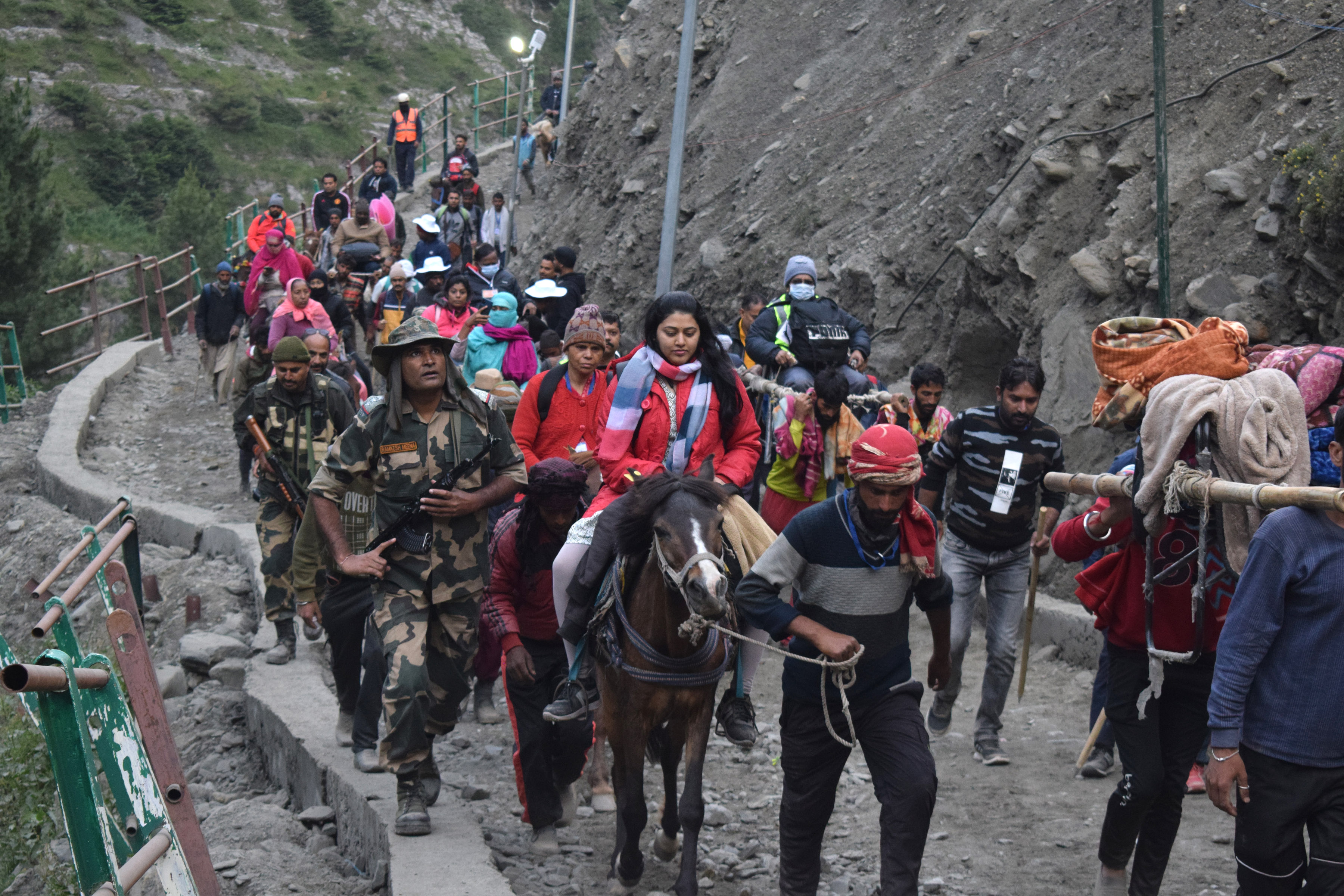
The first security threat to the pilgrimage came in 1993; when the Pakistan-based Harkat-ul-Ansar announced a ban on the Yatra as a protest against the demolition of the Babri Masjid in India’s Ayodhya but the local militant groups did not back it and the pilgrimage continued to progress smoothly even during the peak years of militancy in Kashmir.
The first direct attack on pilgrims was reported in 2000 in which 25 people, including 17 pilgrims, were killed at Pahalgam base camp, for over two years, small and big attacks followed.
No major attack was reported since 2002 even when the 2008 unrest erupted over transferring canals of land to the Amarnath board, the pilgrimage remained unaffected.
Similarly, no attacks adhered during the 2010 and 2016 summer uprisings.
In July 2017, however, seven pilgrims were killed in a terror attack on their bus.
“This year, due to rising targeted killings, the government doesn’t want to leave any stone unturned and that’s why we see tight security across the valley, especially after the threat letter was issued by a militant outfit against the pilgrimage,” said a political analyst.
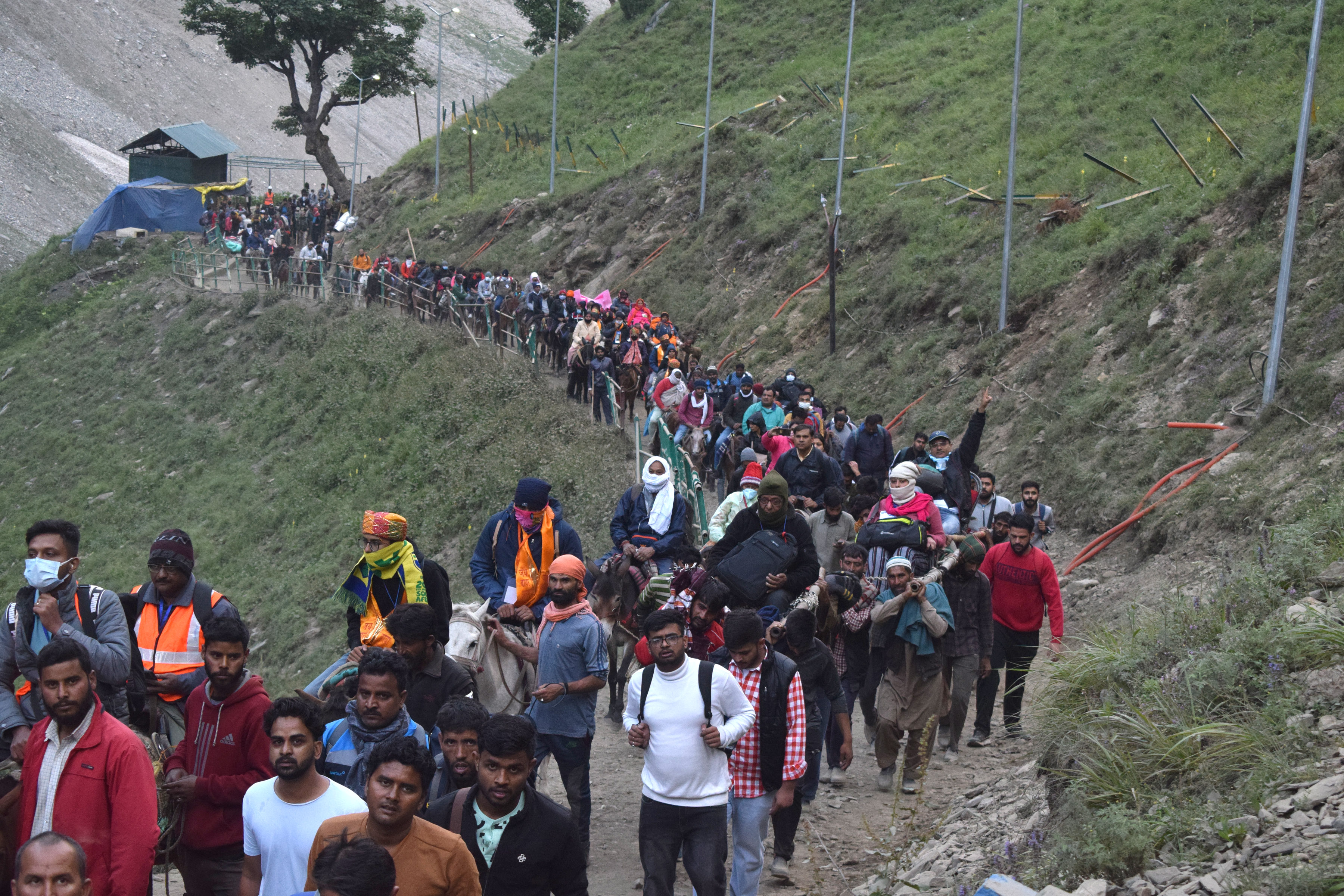
Another pilgrim, Prem Kapoor from Ludhiana area of Punjab who has been coming for the pilgrimage for the past many years also observed the increased deployment of armed forces across the Baltal basecamp, a 16km trek towards the shrine.
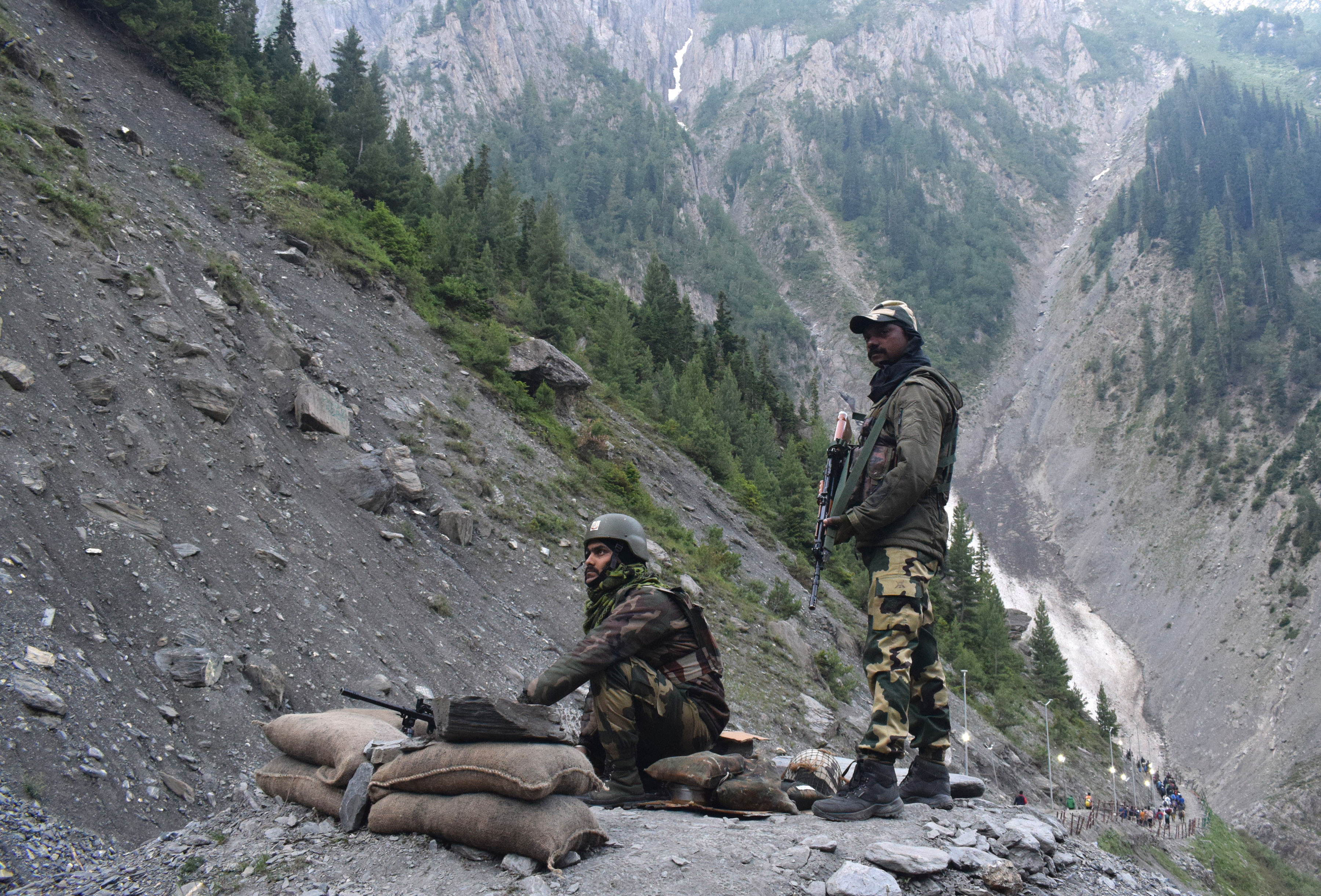
The pilgrims need to pay 110 rupees for filling up the registration form and then the date to arrive in Kashmir is issued by the government, Prem told The Himalayan Post.
Early in the morning at around 4 am, the pilgrims start leaving towards the holy cave, and accommodations and food are provided either by the Shrine board or different religious organizations, he said.
“After taking glimpses of the stalagmite, we vigil the two holy pigeons considered the avatar of the god Shiva and goddess Parvati and that gives peace to our souls,” he said.
.jpg)
According to Hindu mythology, Lord Shiva choose south Kashmir’s Amarnath cave. to tell his wife Parvati the secret of his immortality, Hindus consider the stalagmite formation as the phallus of Shiva, On the left are two smaller ice stalagmites, representing Parvati and Lord Ganesh, Shiva’s Wife and Son.
The cave was discovered by a Muslim shepherd named Buta Malik in 1850, as per the lore and the family of Buta remained the traditional custodian of the shrine, along with Hindu priests from the Dashnami Akhara and Purohit Sabha Mattan.
However, in 2000, Chief Minister Farooq Abdullah’s government brought the pilgrim under the government control and formed a Shrine Board with a state Governor at its head, and Malik’s family and the Hindu organizations were evicted.
Later, the 15 days of pilgrimage were extended for nearly two months in 2005 by the shrine board of Amarnath.